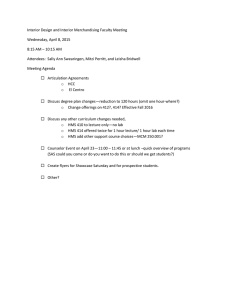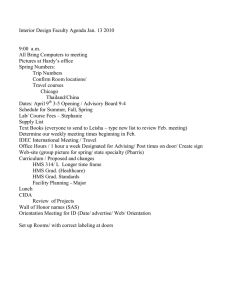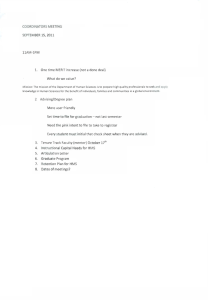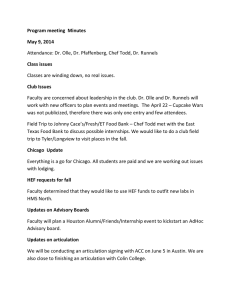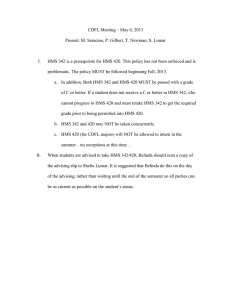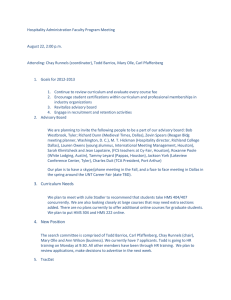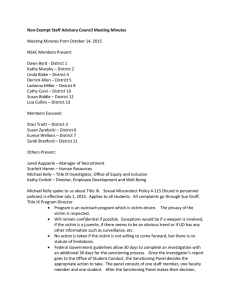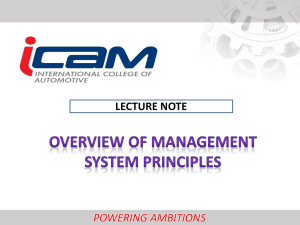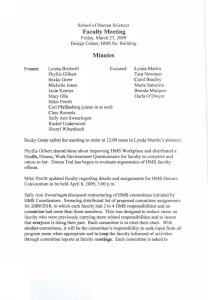Classroom Learning - Harvard Medical School
advertisement
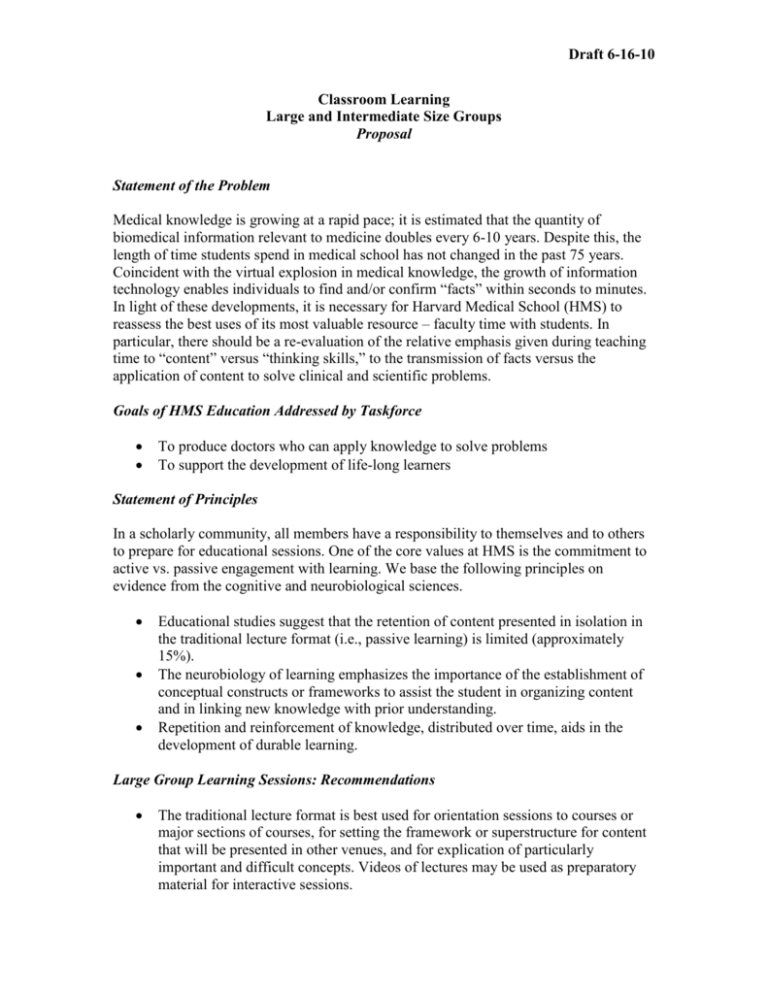
Draft 6-16-10 Classroom Learning Large and Intermediate Size Groups Proposal Statement of the Problem Medical knowledge is growing at a rapid pace; it is estimated that the quantity of biomedical information relevant to medicine doubles every 6-10 years. Despite this, the length of time students spend in medical school has not changed in the past 75 years. Coincident with the virtual explosion in medical knowledge, the growth of information technology enables individuals to find and/or confirm “facts” within seconds to minutes. In light of these developments, it is necessary for Harvard Medical School (HMS) to reassess the best uses of its most valuable resource – faculty time with students. In particular, there should be a re-evaluation of the relative emphasis given during teaching time to “content” versus “thinking skills,” to the transmission of facts versus the application of content to solve clinical and scientific problems. Goals of HMS Education Addressed by Taskforce To produce doctors who can apply knowledge to solve problems To support the development of life-long learners Statement of Principles In a scholarly community, all members have a responsibility to themselves and to others to prepare for educational sessions. One of the core values at HMS is the commitment to active vs. passive engagement with learning. We base the following principles on evidence from the cognitive and neurobiological sciences. Educational studies suggest that the retention of content presented in isolation in the traditional lecture format (i.e., passive learning) is limited (approximately 15%). The neurobiology of learning emphasizes the importance of the establishment of conceptual constructs or frameworks to assist the student in organizing content and in linking new knowledge with prior understanding. Repetition and reinforcement of knowledge, distributed over time, aids in the development of durable learning. Large Group Learning Sessions: Recommendations The traditional lecture format is best used for orientation sessions to courses or major sections of courses, for setting the framework or superstructure for content that will be presented in other venues, and for explication of particularly important and difficult concepts. Videos of lectures may be used as preparatory material for interactive sessions. Draft 6-16-10 Large group learning can be interactive, engaged learning. To enhance active learning in large groups, students’ minds and, to some degree, their bodies must be activated. Therefore, teachers should consider incorporating one or more of a range of interactive experiences into large group learning sessions. For example: o Discussion of clinical and/or basic science problems/cases/vignettes with audience response systems. o Use of “team-based” teaching in which the large group is subdivided into smaller groups to work on a question/problem followed by reconstitution of the large group for discussion of the approaches to the problem. o Development of concept maps and modeling of analytical reasoning. o Use of audience response systems for review sessions. o The use of a large group session to debrief students on small group learning experiences. o Sessions in which two or more faculty co-teach an interactive session with students. o Use of “chalk talks” or tablet PC’s, which activate the teacher thereby contributing to a more engaging kinesthetic environment. Such approaches also facilitate learning by “slowing” the pace of the presentation and by making the elaboration of the principle demonstrated more apparent to the student. For content-oriented sessions, learning objectives and relevant materials should be distributed to students well in advance of the session to enable them to prepare for “active listening” and to generate questions to clarify concepts. Strong consideration should be given to replacement of some large group learning with medium-size groups (20-40 students) to increase active learning and student interactions. A small group of “trained” faculty should be responsible for the substantial majority of large group teaching sessions both to enhance the quality of the learning experiences and to provide continuity and integration among sessions. Course directors should carefully scrutinize lectures conducted by content experts who are untrained in these pedagogical techniques. Faculty development is needed to make optimal use of strategies that enhance long-term memory and transfer of knowledge to new situations. Large Group Learning Sessions: Additional Considerations for Course Directors The course director, with assistance from the HMS Academy, should take responsibility for identifying, supporting, and providing training faculty to attain high quality teaching. The course director should orient faculty to the course content and goals, as well as the pedagogical principles underlying the course organization. The course director should balance the proportion of large group activities and other instructional formats based upon both course goals and the educational principles articulated in this document. The course director should strive to provide a context for the content presented to enhance understanding and the subsequent transfer of learning. To achieve these Draft 6-16-10 goals, sessions should include patient-centered or policy related discussions within large group sessions. In addition, the course director should include frequent student assessment (self-assessment or graded exercises) throughout the course to provide rapid feedback to both students and faculty regarding student comprehension of content. The group believes that implementation of these recommendations will put more responsibility upon and require more effort from course directors. Consideration should be given to increasing the financial compensation to course directors accordingly. In addition, a commitment to increased use of “intermediate” sized teaching sessions will require re-configuration of space within the medical education center. Appendix 1: A compendium of best practices employed by faculty in years 1 and 2 for large group instruction
